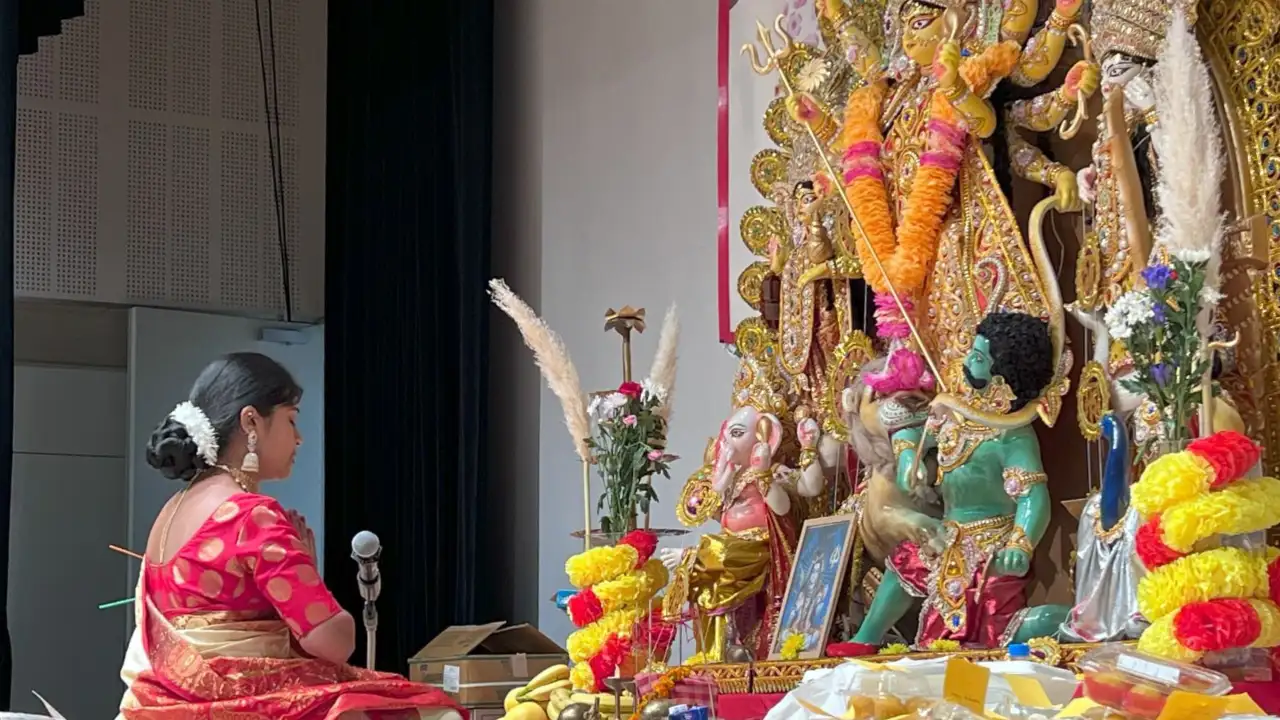In Japan, She Found Her True Bhakti: How A Female Priest Is Redefining Durga Puja Celebrations in Tokyo
By Ishita Roy
Copyright timesnownews

Durga Puja is here, and everyone is gearing up to the celebration. Not just those who live in India, but even the ones who live abroad. While many of us have seen Durga Puja photos from the US, UK, and other countries, not many are aware that even East Asian countries also celebrate Pujo. In South Korea, the celebration takes place in Uijeongbu, and in Japan, Tokyo is the hub. But something makes Japan stands out from all the other foreign lands where Pujo is celebrated. Here’s how. In the Koto-ku area of Tokyo, Somdatta Banerjee, a female priest is spearheading the responsibility of conducting Durga Puja. She is part of the India Bengal Cultural Association Japan (IBCAJ), group that organises Durga Puja in Japan, called. Their first pujo was started some 14 years back. What makes them stand out is that the Puja offerings are made by a female priest. Out of affection, she is called ‘Sensei’, which in Japanese stands for a teacher. Born and brought up in West Bengal’s Shantiniketan, she moved to Tokyo five years back. What did not sit right with her was seeing her grandfather and other male members of the family being the only ones who performed Durga Puja. “Females were only supporters, I used to wonder, ‘why only men? why can’t women be a priest?'” she shares. When after moving to Japan and being part of IBCAJ, in one of the general meetings, members discussed the priest for next puja, she stepped in. “The regular male priest was unavailable due to something, when asked who would be the next priest, I hesitantly said that I want to try,” she says. “There was a silence for few seconds,” she continues, “then one by one members supported me.” What Somdatta does is different. “In God’s eye, all are equal. For me, as an individual devotion is beyond taboos and boundaries,” she says. In practice too, she personally never discourages any woman from offering Puja while menstruating. The tradition of ‘Baran’, a ritual, traditionally performed by married women where Goddess is smeared by sindoor (vermillion) on Vijay Dashmi. Conventionally, unmarried or widowed are not allowed to perform the ritual, however, Somdatta rightly points out, “God will never say you are unmarried so you cannot perform Puja. The essence of Puja is Bhakti, and not someone’s marital status.” With this belief, she continues to offer her Bhakti to Goddess Durga. However, all of it did not come so easy. Also Read: Subhash Chandra Bose, Bankim Chandra Chattopadhyay, And Many Other Freedom Fighters Turned Durga Puja Into A Symbol Against The British Raj Was It Easy Being A Female Priest? “Trust me, the first 15 minutes were so difficult because male priests have countless examples to follow and receive guidance, we have none. But after the first 15 minutes, everything flowed. It was like Maa Durga had accepted me as her daughter priest,” she says. Somdatta reveals that she had to prepare everything on her own, in her own way. “I practiced by myself, and also had my husband and my two young daughters, always supporting me. I practiced chanting mantras and learned all the rituals of Puja,” she shares. What helped her was her knowledge and interest in Sanskrit that she had from her school days. While she has looked up to the previous priests for guidance, her way of doing things do not exclude women from being part of the Pujo. Menstruating or not, widowed, married, unmarried, remarried, she does not discriminate. “We worship Kamakhya Devi, a Tantric Goddess, in her menstruating form, this symbolizes fertility, creation and the life-giving power of nature. In that place menstruation is not seen as impurity, then who are we to exclude?” Durga Puja Scenes In Japan However, IBCAJ is not the only one organising Pujo, in fact, there exists an organisation which may be credited for the oldest Pujo in Japan. 79-year-old Syamal Kar, who is now retired has been living in Yokohama for 40 years, he tells us that the General Incorporated Association, which is registered with the Government of Japan, named the Bengali Association of Tokyo, Japan (BATJ) is the one responsible for organising Durga Puja in Japan. “We started Durga Puja in Tokyo in 1990, in fact, Saraswati Puja was start even before, in 1981,” he shares with excitement. As of December 2024, according to the Embassy of India in Tokyo, there are approximately 53,974 Indian nationals living in Japan, they also make the third-largest foreign group of South Asia in the country, right behind Nepalis and Burmese nationals. Such a big population, of course, cannot miss Pujo celebration. He shares that the idol came directly from over 5,000 km away – Kumartuli, itself. The idol has been in use for 5 years, and is kept in an air conditioned storage room after the Puja celebrations are over so it could be reused. “Ours is a single chali idol, the height is little more than a man’s height,” shares Kar. In A Country So Far Away, How Is It All Managed? In Tokyo, tells Kar, each ward office manage and rent out big community halls. “We try to book a hall which suits our needs. Usually, there is no fixed place for Durga Puja, wherever we get the hall on rent, the location changes depending on it.” The Pujo is a collaboration, a member who owns a restaurant takes care of the khichuri that gets distributed among the people. The bhog for Goddess is prepared by another member. While the priest too is a member of BATJ. “All members are invited to participate in the cultural program and they feel involved,” says Kar. A Culture That Holds On Durga Puja is known not just for the offerings made to the Goddess, but also for the cultural programs. In Tokyo too, these cultural programs are organised, whether it is singing, dancing, play, or playing instruments. Kar shares, that even Japanese national too participate. Somdatta too seconds the thought and proudly says, “Our IBCAJ puja has become so popular that people travel from faraway places to witness this and experience my Puja.”



